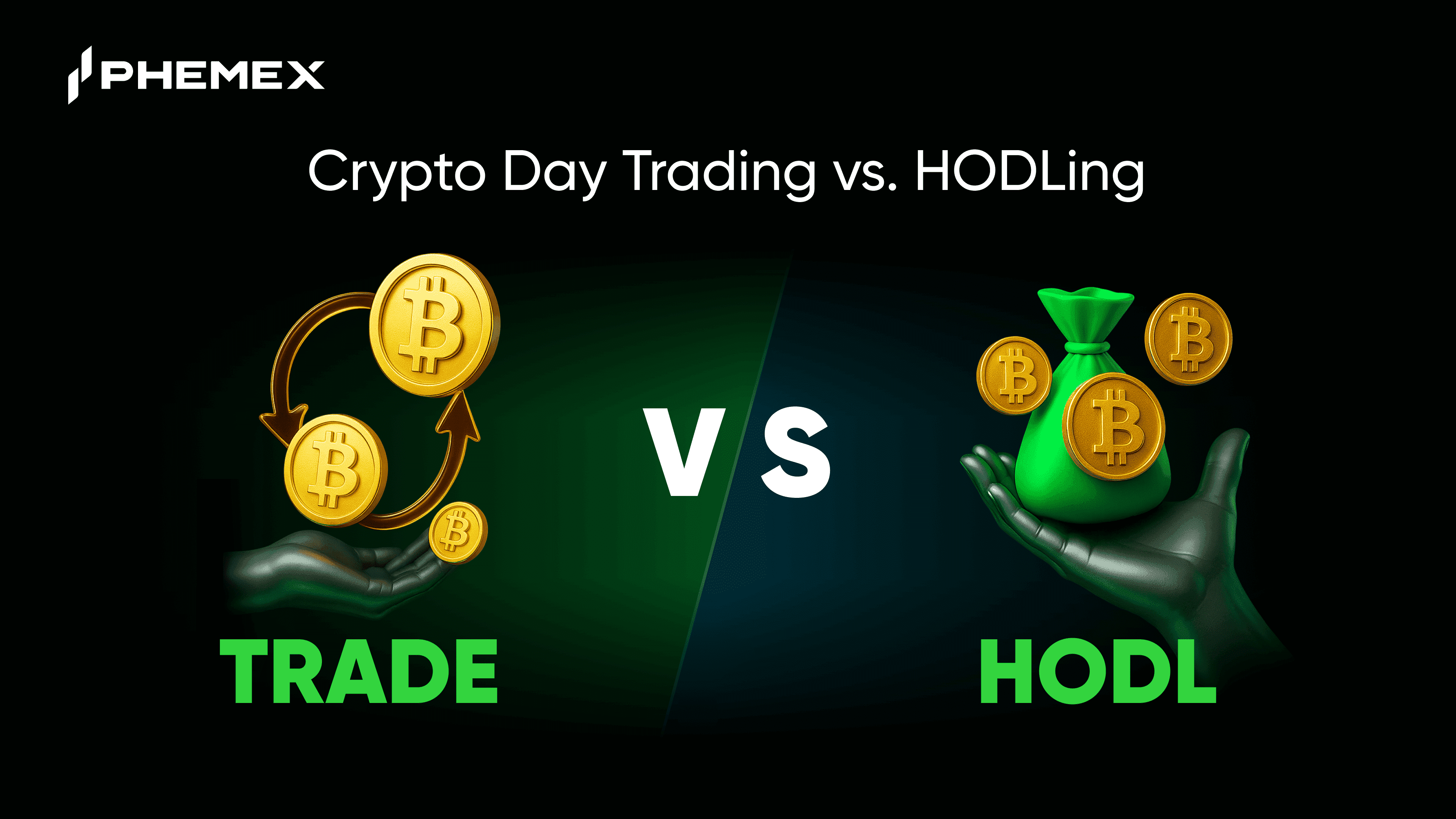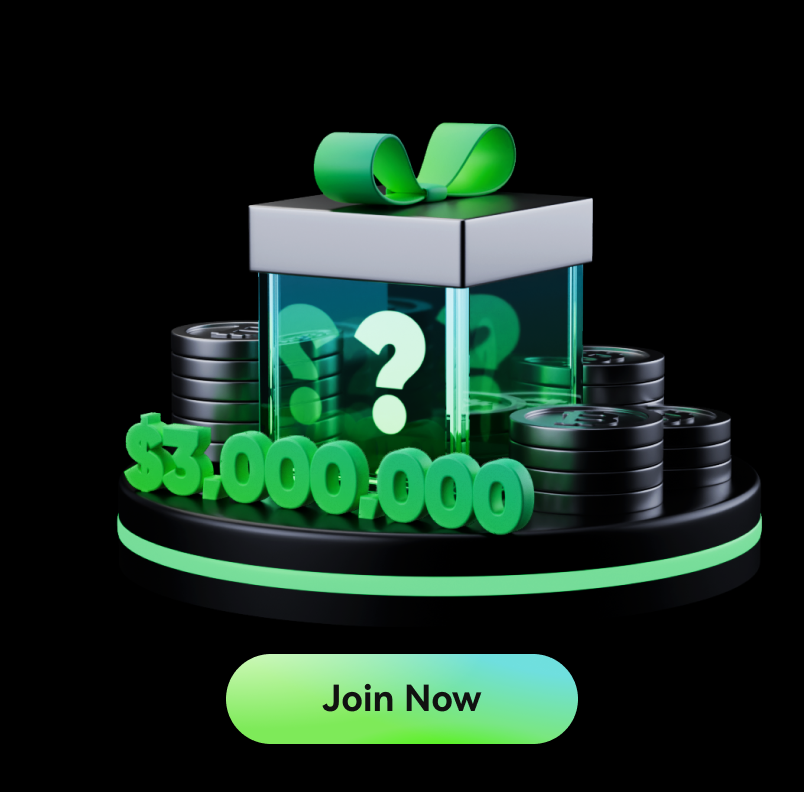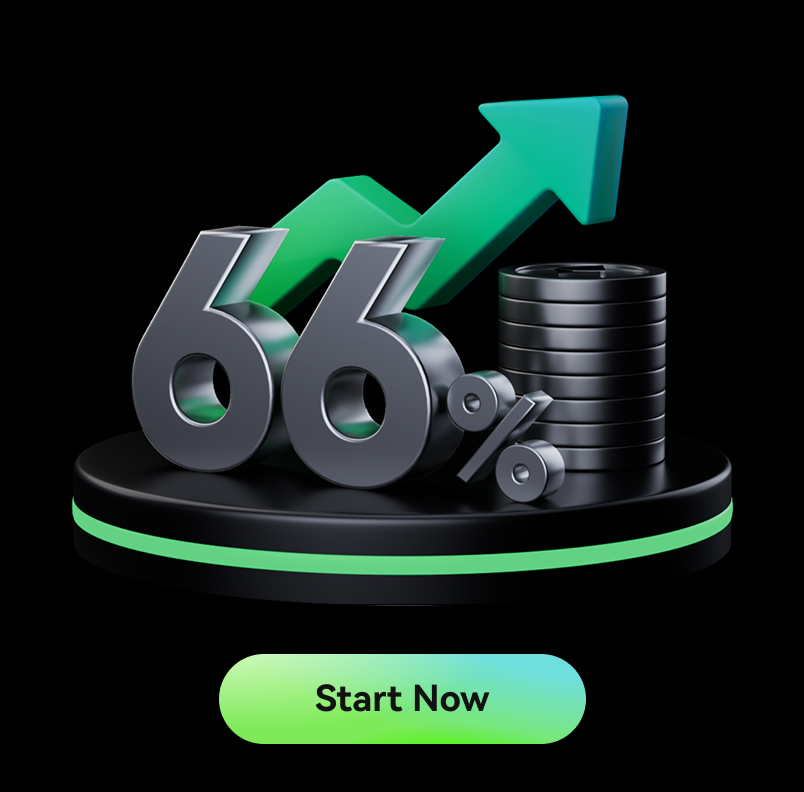It's the single most fundamental question every person in crypto must answer for themselves: "Should I day trade, or should I HODL?" This isn't just a tactical choice about when to click "buy" or "sell"; it's a philosophical one that will define your entire relationship with the market. It's a great debate that rages on Reddit forums, in professional trading circles, and likely, in your own mind.
The path you choose will determine your time commitment, the skills you need to develop, your psychological resilience, and ultimately, your potential outcomes. A mistake here isn't just costly; it can lead to burnout, frustration, and missed opportunities.
While other guides define the terms, this Phemex Academy masterclass will provide a comprehensive framework to help you decide. We will dissect the mindset, the methodology, and the toolkits for each path. We will give you an honest, unvarnished look at what it truly takes to succeed, and by the end, you will have the clarity to choose the right path not for the market, but for you.

The Core Philosophies: The Mindset of a Trader vs. an Investor
Before we can compare actions, we must first understand the mindsets that drive them. Day trading and HODLing are not just different techniques; they are different worldviews.
The HODLer: An Investor's Mindset
The term "HODL" famously originated from a misspelled forum post, but it has evolved into a powerful investment philosophy. The core belief of a HODLer is a phrase popularized by investment legends like John Bogle: "Time in the market beats timing the market."
-
Focus: The HODLer is concerned with long-term value. Their analysis is deep and fundamental, focusing on a project's core technology, the quality of its development team, its tokenomics, its competitive landscape, and its potential for network effects. They are asking, "Will this asset be significantly more valuable in 5, 10, or even 20 years?"
-
Analogy: The HODLer is planting an oak tree. The process begins with careful research to find the most fertile ground (a strong project). After planting the seed (making the initial investment), the primary job is to wait, allowing time and compounding to do their work. They are not concerned with the daily weather, but with the long-term health of the forest.
The Day Trader: A Trader's Mindset
The day trader operates on the opposite end of the time spectrum. Their core belief is simple: "Profit is found in volatility."
-
Focus: The day trader is concerned with short-term price action. Their analysis is primarily technical, focusing on chart patterns, candlestick formations, indicators like RSI and moving averages, order book dynamics, and real-time market sentiment. They are asking, "Where is the price likely to go in the next 5 minutes, 30 minutes, or 2 hours?"
-
Analogy: The day trader is surfing waves. They are not concerned with the long-term geology of the ocean floor. Their goal is to identify a wave (a short-term trend), ride its energy for a brief period, and get off before it inevitably crashes. Their success is measured not by the size of a single wave, but by their ability to successfully ride many waves, day after day.
The Definitive Comparison: Day Trading vs. HODLing Head-to-Head
To truly understand which path might be right for you, a direct, side-by-side comparison is essential. This table breaks down the key differences in a clear, scannable format.
| Factor | Day Trading | HODLing (Holding) |
| Time Commitment | High & Active: A part-time or full-time job. Requires daily, hours-long screen time for analysis and execution. | Low & Passive: An initial, intensive research phase followed by periodic check-ins (e.g., weekly or monthly). |
| Skillset Required | Technical Analysis, Order Book Reading, High-Speed Execution, Statistical Analysis, Disciplined Risk Management. | Fundamental Analysis, Macro-Economic Understanding, Thesis Development, Emotional Patience. |
| Psychological Stress | Extremely High: Involves constant focus, rapid decision-making under pressure, and dealing with frequent small losses. | Low to Moderate, with moments of extreme stress: Long periods of calm punctuated by high anxiety during major market crashes. |
| Risk Profile | High frequency of small, controlled risks. The danger is "death by a thousand cuts" from many small losing trades. | Low frequency of large, systemic risks. The danger is a single catastrophic market downturn or a project failing over time. |
| Potential Returns | Aims for consistent, compounding income. Returns are liquid and realized daily or weekly. | Aims for large, multi-bagger returns over many years. Returns are illiquid for long periods. |
| Required Tools | Advanced Charting, Futures/Perpetuals, Low-Fee Exchange, Fast Internet. | Secure Hardware Wallet, Spot Exchange, Staking/Savings Products. |
| Tax Implications | Highly Complex: Involves tracking hundreds or thousands of trades, typically taxed at higher short-term capital gains rates. | Simpler: Involves only a few transactions, often qualifying for lower long-term capital gains tax rates (in most jurisdictions). |
A Day in the Life: The Reality of Each Strategy
Abstract pros and cons are useful, but to truly feel the difference, let's paint a realistic picture of what each path entails.
A Day in the Life of a Day Trader
The day trader's life is a disciplined, high-intensity routine. It is a profession, not a hobby.
-
Morning (Pre-Market): The day begins before the main market action. This involves reviewing overnight price action from other regions, reading market news, identifying key support and resistance levels for the day, and formulating a trading plan with specific entry, exit, and stop-loss points for potential trades.
-
Trading Session (The Grind): This is the period of intense focus. The trader is at their desk, watching multiple screens. One screen might have a 15-minute chart for the overall trend, another a 1-minute chart for entry signals, and a third dedicated to the live order book and trade feed ("the tape"). They are executing multiple trades, cutting losses quickly, and taking small, consistent profits. It is a mentally draining process of constant probability assessment.
-
End of Day (Post-Market): The work isn't over when the trading stops. The professional trader reviews every trade from the day—both winners and losers—to identify mistakes and refine their strategy. They update their trading journal and prepare for the next day.
A Day (or Month) in the Life of a HODLer
The HODLer's life is one of intense initial effort followed by long periods of strategic patience.
-
The Research Phase (Weeks to Months): Before ever clicking "buy," the true HODLer spends weeks or even months in deep research. This involves reading the project's whitepaper, analyzing the credentials and history of the development team, assessing the tokenomics and supply schedule, understanding the competitive landscape, and actively participating in the community on platforms like Discord or Telegram to gauge the project's health.
-
The Action (A Few Hours): Once conviction is established, the action is simple. The HODLer makes their purchase on a spot exchange, then transfers the assets to a secure, long-term storage solution like a hardware wallet. Alternatively, they might deposit it into a trusted platform like Phemex Earn to generate passive yield.
-
The Holding Phase (Years): This is the hardest part. It involves doing... almost nothing. The HODLer might check prices weekly or monthly, read major project development updates, and perhaps rebalance their portfolio once a year. Their primary job is to have the emotional fortitude to resist the constant noise of the market and the overwhelming urge to panic-sell during brutal bear market downturns.
The Professional's Toolkit: The Right Phemex Products for Your Strategy
Your chosen strategy dictates your toolset. Phemex is designed to provide professional-grade tools for every type of market participant.
The HODLer's Toolkit on Phemex
-
Spot Trading: This is the HODLer's primary tool. Phemex offers a wide selection of assets for direct ownership, allowing you to buy and hold the actual cryptocurrencies you believe in for the long term.
-
Phemex Earn: A HODL strategy doesn't have to be entirely passive. Phemex Earn allows HODLers to put their assets to work through flexible savings or fixed-term staking products. This allows them to earn a passive yield on their holdings, effectively compounding their investment over time.
-
Trading Bots (DCA Bot): Dollar-Cost Averaging (DCA) is a disciplined HODL strategy that involves buying a fixed dollar amount of an asset at regular intervals, regardless of price. A Phemex DCA Bot can automate this process, removing emotion and ensuring consistent investment.
The Day Trader's Toolkit on Phemex
-
Perpetual Futures: These are the essential instruments for day traders. Phemex's perpetual contracts allow traders to use leverage to amplify the profit potential of small intraday price movements. Crucially, they also allow traders to go short, providing the ability to profit even when the market is falling.
-
Advanced Charting Tools: Our trading interface is powered by TradingView, providing day traders with a full suite of hundreds of technical indicators, drawing tools, and chart types needed for professional-grade technical analysis.
-
The Order Book: As detailed in our Academy guide, the live order book is a critical tool for day traders to read real-time supply and demand, spot large orders (walls), and analyze order flow for a short-term edge.
The Million-Dollar Question: Can You Make $1000 a Day from Day Trading?
This is one of the most frequently asked questions, and it deserves a responsible, expert answer that builds trust. The technical answer is yes, it is mathematically possible for the top 1% of elite, full-time professionals to have highly profitable days. However, the realistic answer for the vast majority of people is no.
Achieving such results is akin to becoming a professional athlete. It is the outcome of a rare combination of four critical pillars:
-
Significant Capital: To generate $1,000 in profit from small, 1-2% intraday moves, you need to be trading with a very large capital base, often six figures or more.
-
Exceptional Skill: This is not a hobby. It requires a deep, practiced mastery of technical analysis, order flow, market microstructure, and statistical probability, often honed over years of study and losses.
-
Ironclad Risk Management: This is the single most important pillar. The best traders are not those who are always right; they are masters at cutting their losses instantly and mercilessly. They think in terms of risk-to-reward ratios, not just profits.
-
Psychological Fortitude: The ability to withstand the immense emotional stress of rapid wins and losses, to take a loss without "revenge trading," and to stick to your strategy with unwavering discipline.
The key takeaway is this: Day trading is not a get-rich-quick scheme. It is one of the most competitive professions in the world. Success is possible, but it is earned through immense dedication, education, and discipline.
Beyond the Binary: Swing Trading and Hybrid Strategies
The choice is not strictly between the hour-by-hour intensity of day trading and the decade-long patience of HODLing. There are professional strategies that occupy the middle ground.
The Middle Path: An Introduction to Swing Trading
Swing trading is a strategy that holds trades for a period of a few days to a few weeks, aiming to capture a single "swing" or trend in the market. It's a blend of both worlds: swing traders use technical analysis to time their entries and exits, but they often use fundamental analysis to select assets with strong upcoming catalysts. It requires less screen time than day trading but is more active than HODLing.
The "Core-Satellite" Strategy: The Best of Both Worlds?
This is a popular portfolio strategy used by professional investors. It combines the stability of HODLing with the alpha-generating potential of active trading.
- Core: A large percentage of the portfolio (e.g., 70-80%) is dedicated to long-term HODL positions in high-conviction assets like Bitcoin and Ethereum. This forms the stable bedrock of the portfolio.
- Satellite: A smaller percentage (e.g., 20-30%) is allocated to an "active" portfolio. This capital can be used for day trading, swing trading, or investing in higher-risk, early-stage projects to generate active income and capture short-term opportunities.
The Final Framework: Which Strategy Is Right for YOU?
Now it's time to turn the analysis inward. Use this self-assessment checklist to find the path that best aligns with your life.
-
What is your Time Availability? Be honest. Do you have multiple hours to dedicate to the screen every single day (Day Trader), or can you only commit to research on weekends and occasional check-ins (HODLer)?
-
What is your Risk Tolerance? Can you psychologically handle the stress of frequent small losses and the possibility of a losing day or week (Day Trader)? Or do you prefer to ride out large, gut-wrenching market cycles with the conviction that the market will eventually recover (HODLer)?
-
What is your Personality? Are you patient, methodical, and research-oriented (HODLer)? Or are you quick-thinking, decisive, and thrive on action and immediate feedback (Day Trader)?
-
What are your Financial Goals? Are you seeking to build long-term, generational wealth (HODLer)? Or are you aiming to generate an active, supplementary income stream (Day Trader)?
-
What is your Current Skill Level? Are you new to crypto and still learning the basics (start with HODLing)? Or are you already comfortable with advanced charting, leverage, and risk management (consider Day Trading)?
Conclusion: There is No "Best" Strategy, Only the Best Strategy for You
The great debate between Day Trading and HODLing has no single right answer, because it's the wrong question. The right question is, "Which strategy is best for me?"
HODLing is a powerful, proven strategy for wealth creation, based on long-term conviction, fundamental research, and emotional patience. It is the path of an investor.
Day Trading is a high-skill profession for generating active income from market volatility, based on technical prowess, disciplined risk management, and psychological resilience. It is the path of a trader.
The most important step you can take is to honestly assess your own personality, goals, and resources. By doing so, you can choose the path that aligns with you, and then commit to mastering it with the dedication it deserves.
Whether you are a HODLer building your long-term portfolio or a Day Trader seeking the ultimate toolset, your journey starts here.








